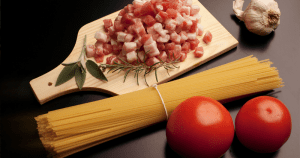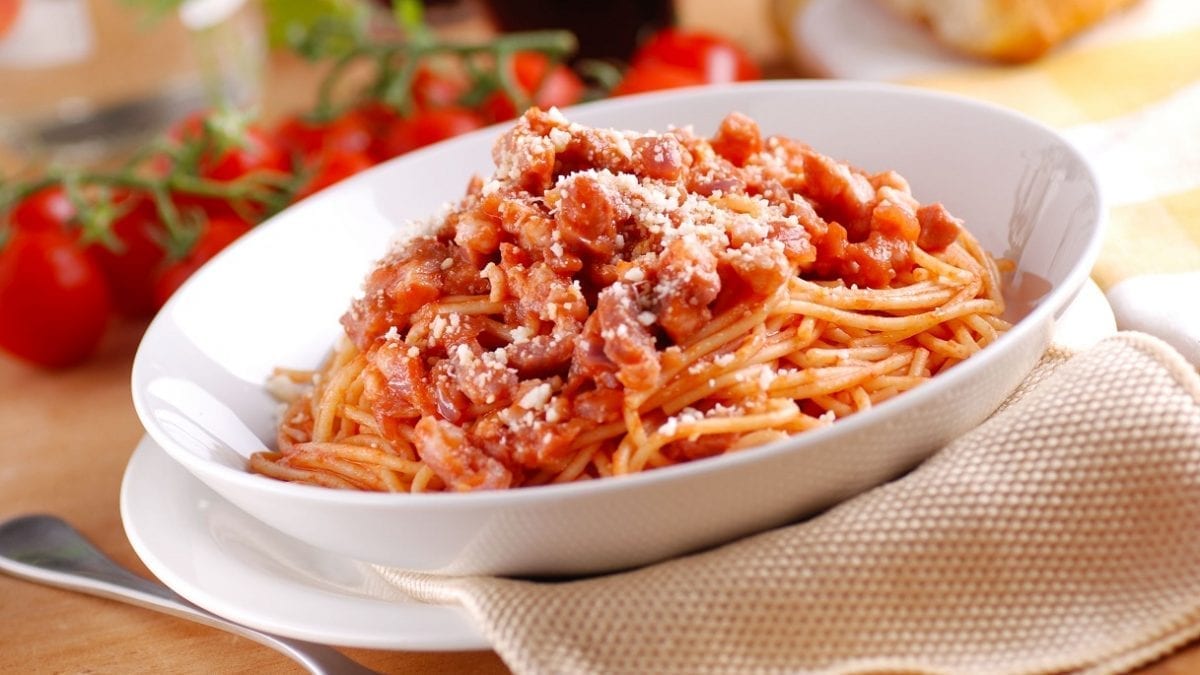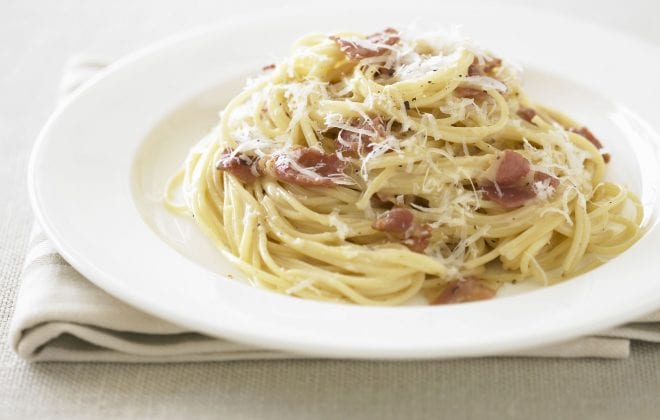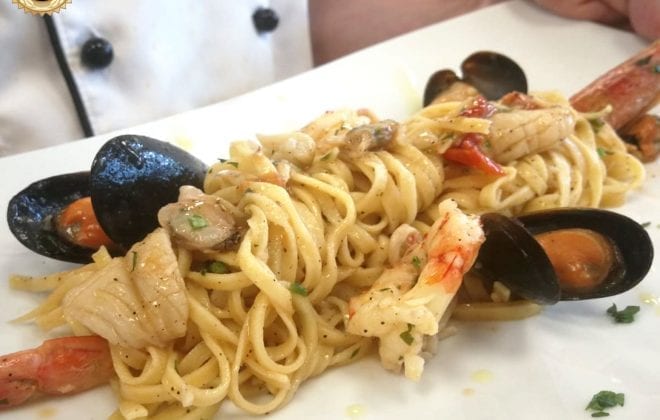History of Amatriciana Sauce, the famous italian pasta condiment
Pasta all’amatriciana (or matriciana) is a typical dish of Roman trattorias and taverns but originally from the town of Amatrice, in the province of Rieti. The basic ingredients are basically three: pecorino, guanciale and tomato sauce. It seems certain that the addition of this last element dates back to the end of 1600 but there are many variations of the dish because a real recipe is difficult to trace.

The amatriciana sauce (matriciana in Romanesco because of the apheresis) is a condiment for pasta, with these ingredients: guanciale, pecorino and tomato. It takes its name from Amatrice, a town in the province of Rieti.
The history of Amatriciana sauce
THE FIRST WRITTEN TESTIMONY OF THIS PLATE COMES FROM THE COOK FRANCESCO LEONARDI WHICH, IN 1816, SERVED IT AT THE COURT OF THE POPE In the 1800s, in the Ponte district (area of piazza Navona area, Ponte Sant’Angelo), there was an alley called de ‘Matriciani (after 1870 alley of the Amatriciani) and a square (now Piazza Lancellotti) where the Grici (Sabini) kept the market, selling bread, salami and cheese from the Sibillini mountains; then they stopped near an inn called L’Amatriciano. This sauce is the son of the gricia (or griscia), a dish of spaghetti or macaroni flavored with oil, pepper and “barbozzo” or “guanciale” (chick of a pig), born in a small town called Grisciano. What is certain is that the addition of tomato sauce dates back to the end of the seventeenth century. The first written testimony of the use of the amatriciana sauce to season the pasta is found in the cookbook of the Roman cook Francesco Leonardi, who served it at the Pope’s court. It was a high-class blow: in the manner of matricians Leonardi imposed a popular dish at a banquet at the Quirinale in honor of Francis I Emperor of Austria, organized by Pope Pius VII in April 1816. Roman by birth, Leonardi had worked in the courts in France with Richelieu, as well as in Poland, Turkey, Germany and England, until arriving, with the role of cook, at the court of Catherine II of Russia. In 1790 he wrote an encyclopedia of 7-volume cooking, L’Apicio Moderno, which is the art of preparing all kinds of food.
DO YOU WANT BECOME A REAL EXPERT IN PASTA? Visit the “Master of Pasta Course” Page.





